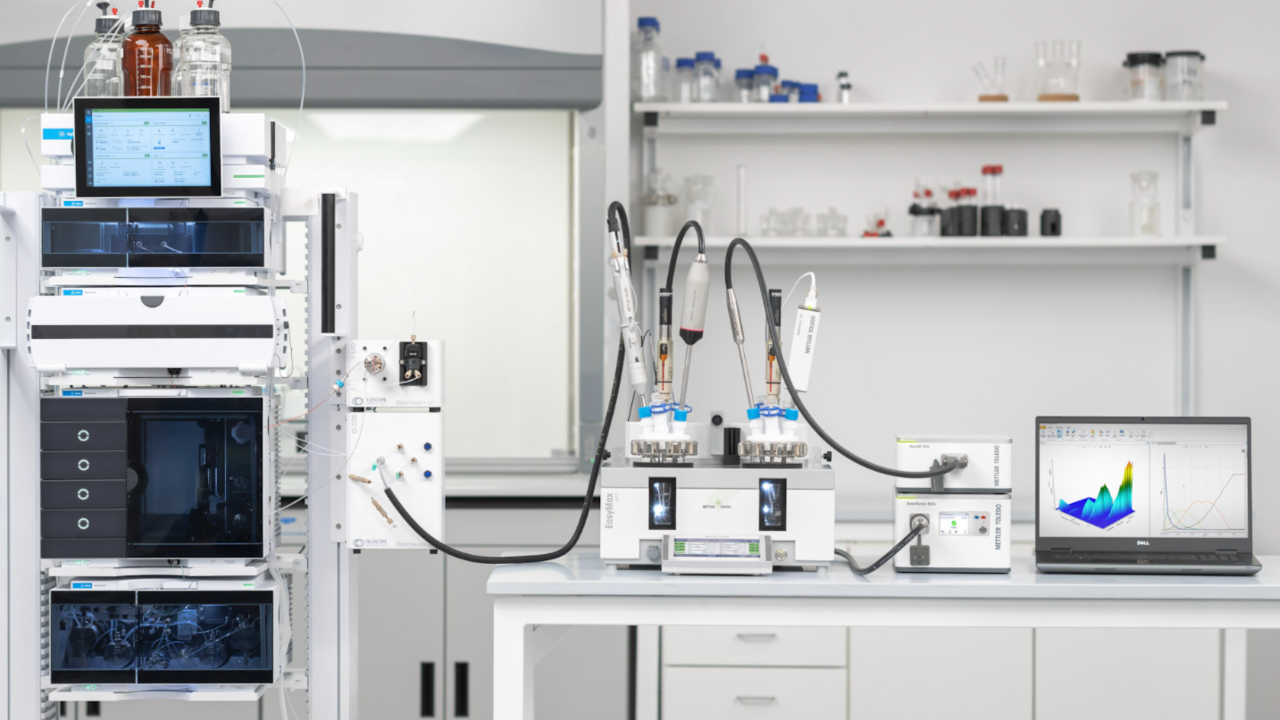Hood, D.M., Johnson, R.A., Vinyard, D.J., Fronczek, F.R. and Stanley, G.G. (2023). Cationic Cobalt(II) Bisphosphine Hydroformylation Catalysis: In Situ Spectroscopic and Reaction Studies. J. Am. Chem. Soc., 145(36), 19715–19726. https://doi.org/10.1021/jacs.3c04866
By observing and tracking key cobalt intermediates in situ, ReactIR measurements shed light on catalyst structure, activity and stability for hydroformylations.
The authors commented that a cationic Co(II) chelating bisphosphine catalyst system, HCo(CO)ₓ(bisphosphine), x = 1–3, is very effective for hydroformylation reactions of internal branched alkenes. The catalyst is both active and stable at temperatures and pressures that are not feasible with other cobalt catalyst systems such as HCo(CO)₄. However, research by other groups postulated that the true catalyst in these cationic Co(II) bisphosphine catalyst systems is actually HCo(CO)₄. The research presented in this current paper uses a combination of spectroscopic studies including in-situ FTIR, NMR, and EPR to show that [HCo(CO)ₓ(bisphosphine)]⁺, x = 1–3, is the primary hydroformylation catalyst system.
The in-situ FTIR studies of the cationic cobalt(II) bisphosphine catalyst system were performed using a ReactIR system equipped with a high pressure silicon ATR probe. In a 101.5 hr experiment with the Co(acac)(DPPBz) catalyst precursor under 30–54 bar 1:1 H₂/CO, the effect of varying temperature was investigated. At room temperature, a Co-CO band at 1937 cm⁻¹ is observed from the cobalt 5-coordinate, 17e⁻ complex [Co(acac)(CO)(DPPBz)]⁺. At 120 °C, the catalyst precursor reacts with H₂ and a number of new carbonyl bands from 2088 to 1974 cm⁻¹ are observed while the 1937 cm⁻¹ band gradually decreases over time. The authors noted that a strong carbonyl band around 1888 cm⁻¹ is observed during the initial formation of the [HCo(CO)ₓ(DPPBz)]⁺, x = 1–3, catalyst mixture. They state that this could arise from the [Co(CO)₄]⁻ anion, which would indicate that the cationic Co(II) catalyst was decomposing to HCo(CO)₄ and [Co(CO)₄]⁻ anion. Temperatures cycling experiments showed that cooling from 120 to 140 °C to room temperature causes the 1888 cm⁻¹ band to reappear and then increasing the temperature back to 120–140 °C causes the 1888 cm⁻¹ band to disappear. A stability study showed that at 120 °C and 53 bar (1:1 H₂/CO) the 1888 cm⁻¹ band completely disappears, and the bands proposed to be due to the [HCo(CO)ₓ(DPPBz)]⁺, x = 1–3, catalyst system remain the same. Furthermore, the IR band intensities of the IR were unchanged, indicating no decomposition to cobalt metal.
At the end of the 101 hr experiment, the system was brought to ambient temperature and pressure and the strong 1888 cm⁻¹ band was again observed along with an intensified 2086 cm⁻¹ band, arising from the 19e⁻ tricarbonyl complex, [HCo(CO)₃(DPPBz)]⁺. This solution was then used in a hydroformylation reaction producing the same results as seen with a fresh Co(acac)(DPPBz) catalyst precursor.
Considering the demonstrated stability of the catalyst system shown by this extended temperature experiment, the authors propose that the 1888 cm⁻¹ band is associated with the formation of a dicationic CO-bridged cobalt(I) dimer [Co₂(μCO)₂(CO)(DPPBz)₂]²⁺ and not [Co(CO)₄]⁻ anion. If the 1888 cm⁻¹ band was a result of the catalyst precursor falling apart to HCo(CO)₄ and [Co(CO)₄]⁻ anion, one would expect to see cobalt metal forming from the further decomposition of HCo(CO)₄ and significant changes in IR band intensities. DFT calculations performed resulted in developing the proposed structure of the dicationic Co(I) dimer, [Co₂(μ-CO)₂(CO)(DPPBz)₂]²⁺.
Furthermore, the IR studies show that as the catalyst precursor reacts with H₂ to form the catalyst, the 1888 cm⁻¹ band due to dimer forms simultaneously. At the higher temperatures at which catalysis is performed, the dimer is unstable and is not likely to be an active catalyst species.
The authors conclude that the extensive EPR, in-situ NMR, in-situ FTIR and reaction studies all support the proposed cationic Co(II) bisphosphine catalyst system: HCo(CO)ₓ(bisphosphine), x = 1–3 and in depth consideration of electronic factors and structure explain the stability and excellent activity for hydroformylation.











